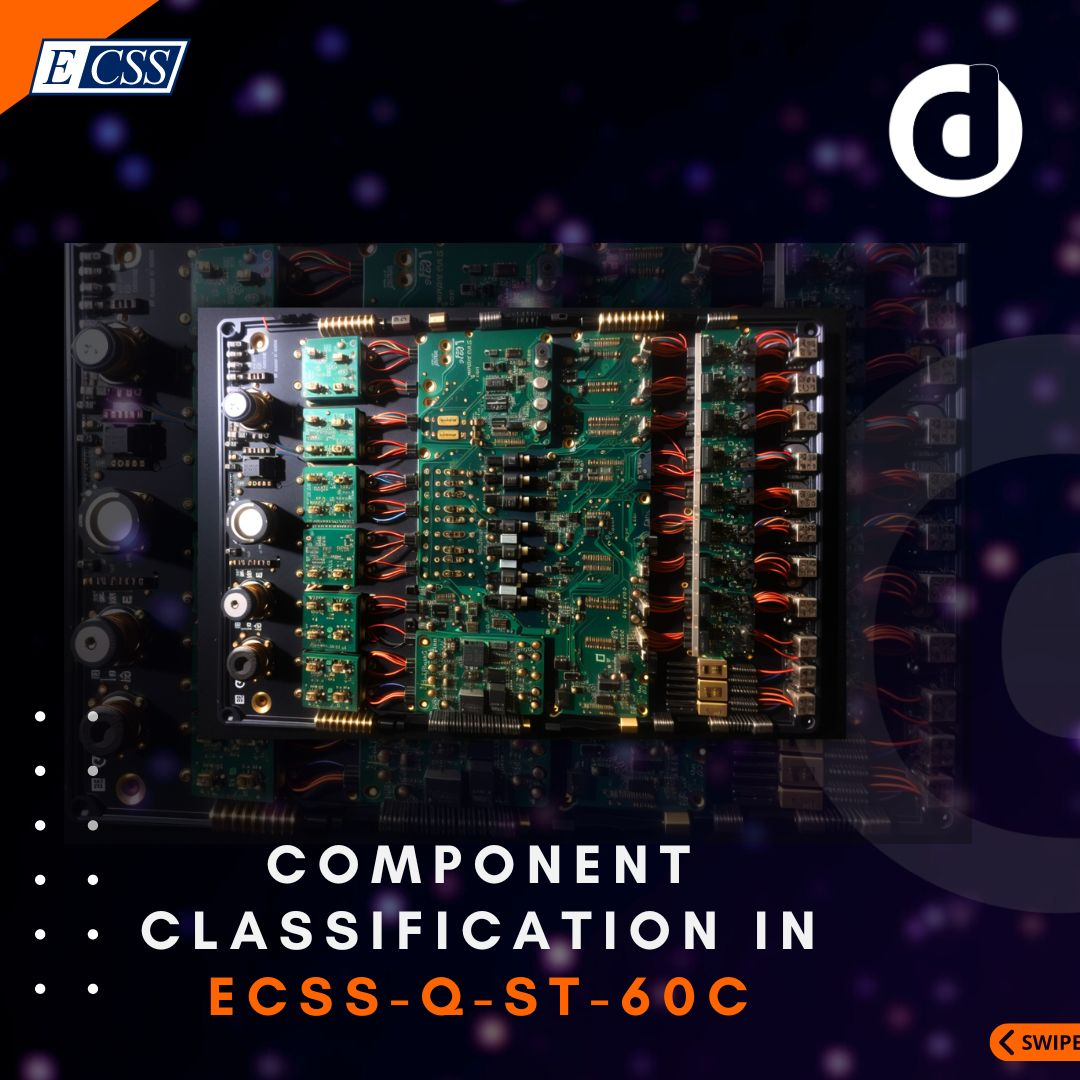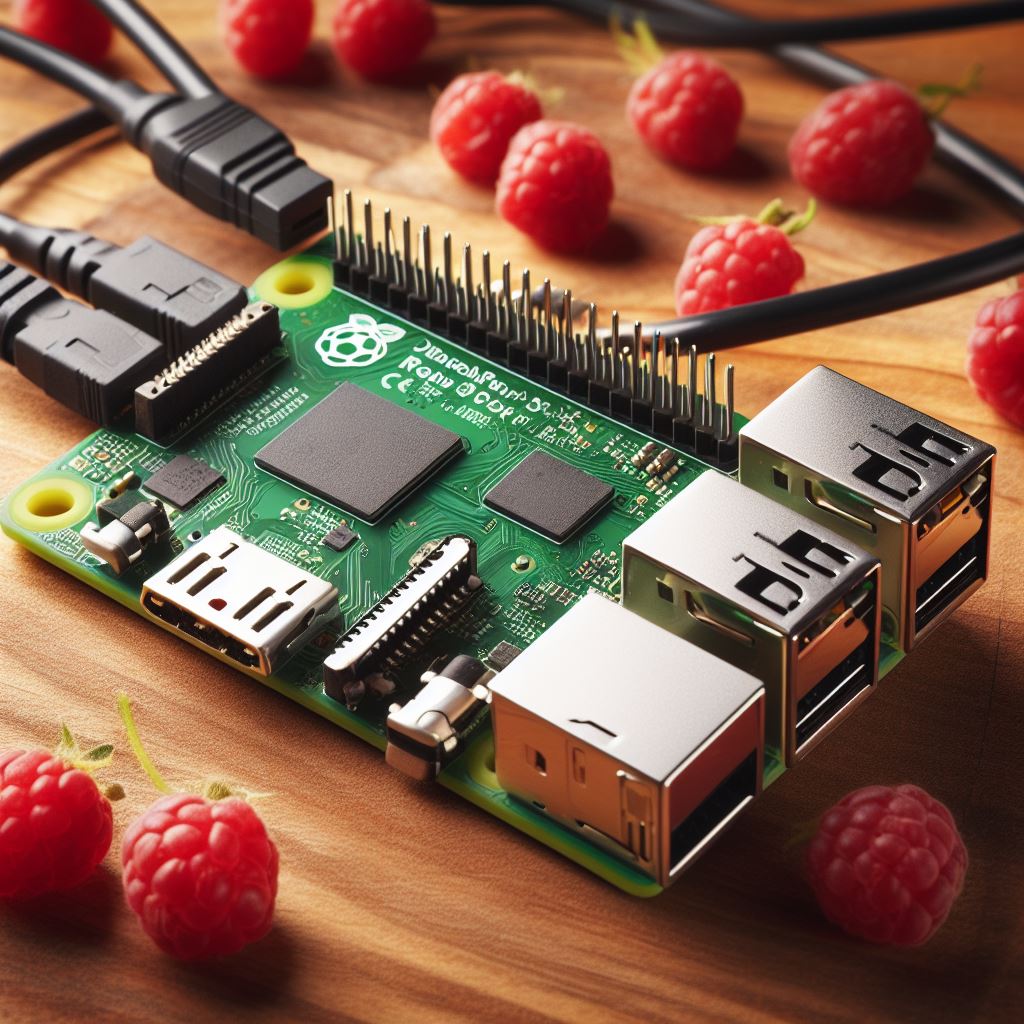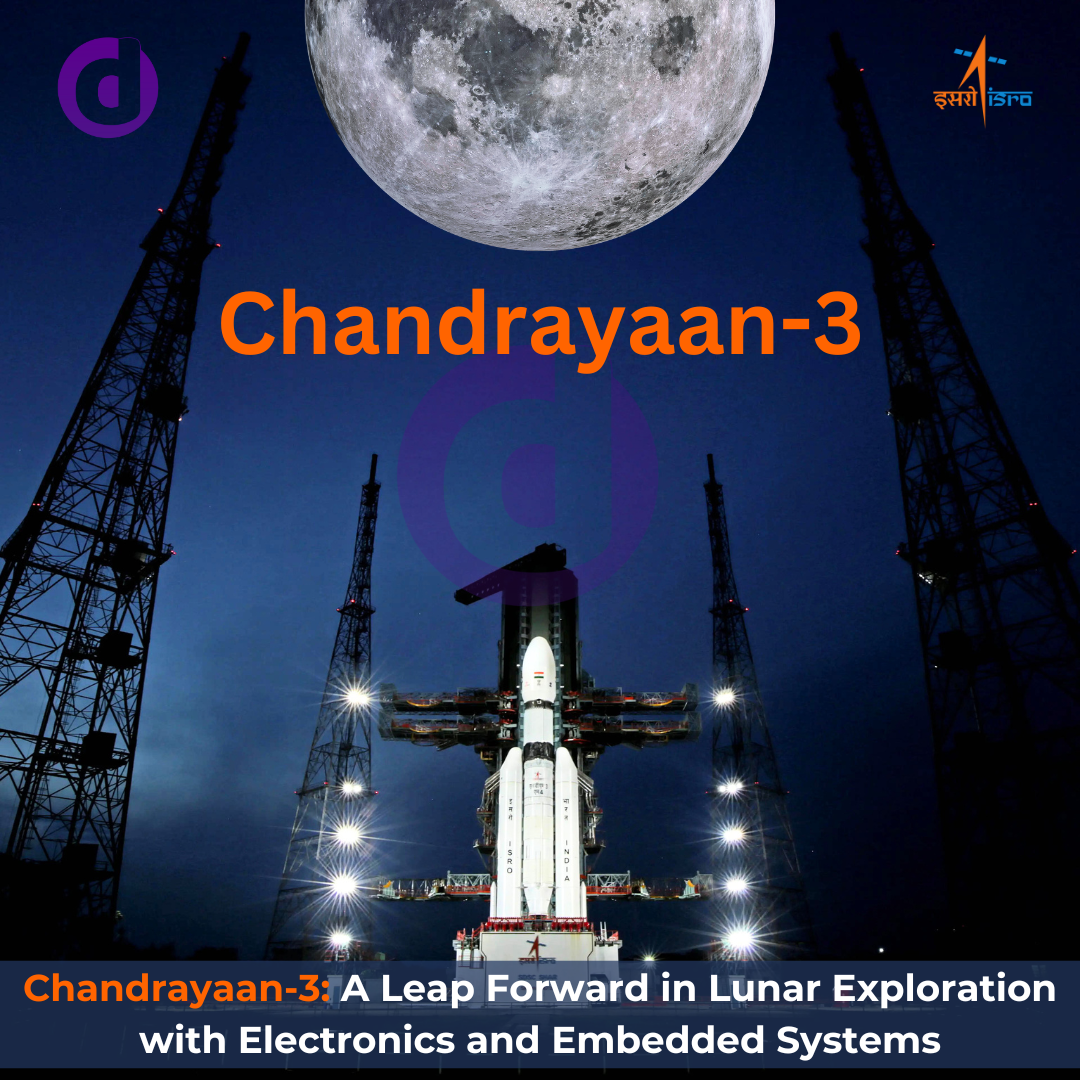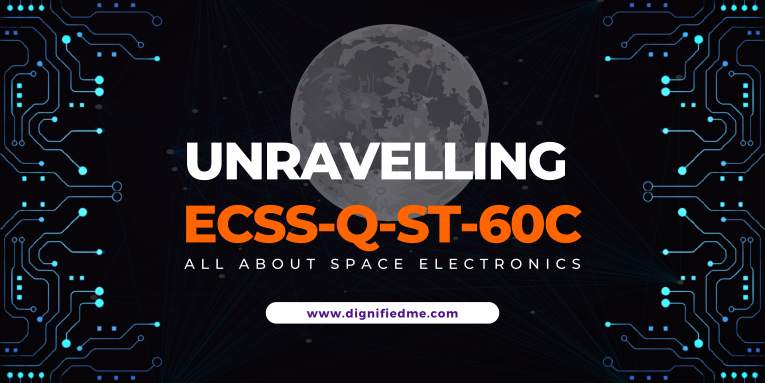 by Rahul Shah
by Rahul Shah Technology
Technology
Component Classification in ECSS-Q-ST-60C
Introduction: ECSS-Q-ST-60C Rev. 3 and Its Emphasis on Components
The space industry's very nature demands rigorous standards to ensure safety, reliability, and mission success. ECSS-Q-ST-60C Rev. 3, as formulated by the ECSS Secretariat and associated European space agencies, underscores this by placing a strong emphasis on Electrical, Electronic, and Electromechanical (EEE) components. These components, foundational to space missions, must adhere to stringent classifications. This not only ensures their optimal functionality but also maintains the integrity of the entire system they are a part of. The ECSS-Q-ST-60C Rev. 3 standard is a testament to the collective vision of European space entities, aiming for excellence in space product assurance through methodical component classification.
An In-depth Look at ECSS-Q-ST-60C Rev. 3's Classification System
ECSS-Q-ST-60C Rev. 3's classification system is both intricate and comprehensive. While I'm drawing insights from the document, the classification is predicated on multiple factors that govern the usability, applicability, and longevity of EEE components. The document meticulously lays out parameters and categories, ensuring that components, when utilized in space missions, are best suited for their intended roles. The depth of this classification system is reflective of the complexities and demands of space missions, where even a minor oversight can have significant repercussions.
Key Criteria for Components Classification
While the document offers a plethora of criteria for classifying components, a few stand out prominently:
· Functionality and Purpose: Every component has a predefined role, and its classification often aligns with its primary function within a system.
· Reliability and Lifespan: Given the extreme conditions of space, components are classified based on their ability to consistently perform over extended periods.
· Compatibility with External Conditions: Space missions expose components to a range of external conditions, from extreme temperatures to radiation.
The classification takes these factors into account, ensuring that components can withstand and function optimally in these conditions.
Exploring the Different Classes: From Basic to Advanced
The ECSS-Q-ST-60C Rev. 3 document provides an extensive breakdown of component classes. From basic components meant for standard applications to advanced ones tailored for critical space missions, there's a clear stratification. This hierarchical approach simplifies the selection process, ensuring that space missions are equipped with components best suited for their specific requirements. The document further delves into the nuances of each class, offering insights into their specifications, use cases, and associated guidelines.
ECSS-Q-ST-60C categorizes electronic components into different classes based on the level of testing and inspection required. The classification, generally speaking, takes into account the level of criticality of the mission, duration of the mission, and the particular function of the component.
Class 1 Components: These are the highest quality components, having undergone the most rigorous testing and quality assurance protocols. Class 1 components are typically used in critical missions where the failure of the component could compromise the mission objective. They are expected to have a very high reliability.
Examples:
Radiation-hardened microprocessors: These are designed to operate reliably in high radiation environments like deep space. This article on Avnet explains the Radiation-hardened processors for space pretty well. A Wikipedia lists down the available options for the microprocessors for space.
Precision oscillators: Used in satellite communication systems to ensure precise timing. Hi-Rel clock Oscillators from Microchip are one of the available options.
High-reliability capacitors: These capacitors can withstand extreme temperatures and conditions in space. One such option is Knowles SO2A (Knowles Syfer Brand capacitors).
Class 2 Components: These components undergo less stringent testing compared to Class 1. They are typically used in missions with a medium level of criticality. While still reliable, there might be certain quality or testing steps that are skipped or reduced in rigor compared to Class 1.
Examples:
Standard microprocessors: Used in satellite subsystems where radiation-hardening may not be as critical.
Commercial off-the-shelf (COTS) sensors: Such as temperature or pressure sensors that are used in non-critical subsystems of a spacecraft.
General-purpose relays: Used in various satellite systems for routing electrical signals.
Class 3 Components: This class is typically reserved for non-critical applications or high-risk, low-cost missions. These components might be o
ff-the-shelf or might not have undergone space qualification testing. They offer a good balance between cost, quality, and performance but might not be suitable for critical mission phases or systems.
Examples:
General-purpose integrated circuits (ICs): These can be found in any electronics store and might be used in prototype testing or non-critical systems.
Standard capacitors and resistors: Used in circuits where precision and high reliability are not crucial.
Consumer-grade sensors: Such as those found in smartphones or other everyday electronics.
The classification serves as a guideline for engineers and procurement teams to select the right kind of components based on the mission requirements. It helps streamline the procurement process by giving clear directives on what quality and testing standards are expected for each class.
Real-world Implications: The Impact of Classification on Product Assurance
The classification of components in space missions, such as the distinction between Class 1 components and others, is not merely a matter of bureaucratic labeling. It has profound real-world implications, especially when it comes to product assurance. In the challenging environment of space, every single component, from the smallest resistor to the most complex integrated circuit, plays a crucial role in the success or failure of the mission. A malfunctioning part can jeopardize an entire mission, leading to loss of data, resources, and in worst cases, the mission itself.
The rigorous guidelines set by classifications ensure that the components are subjected to the highest levels of scrutiny, from selection to procurement and even storage. Components classified under higher classes, such as Class 1, are expected to have undergone stringent evaluation processes, radiation tests, and other necessary assessments to validate their ability to function optimally in the harsh environment of space. Such classifications, therefore, ensure that only the best, most reliable components are utilized, significantly reducing the risk of mission failures.
Product assurance, in essence, goes beyond just ensuring that a product works. It is about guaranteeing that the product will work under specified conditions and for a specified duration. In the realm of space missions, where the margin for error is almost non-existent, the classification of components and the subsequent assurance processes become all the more critical. They ensure the reliability, durability, and performance of the components, contributing to the overall success of the mission.
Chandrayaan 3 and the Probability of Using ISRO Standards
Chandrayaan 3, India's ambitious lunar exploration mission, is spearheaded by the Indian Space Research Organisation (ISRO). Given ISRO's commitment to excellence and its track record of meticulous planning and execution, it is highly probable that the organization employs rigorous standards for the in-house electronics used in the mission. While ISRO might have its set of standards and protocols, they would undoubtedly align with international standards, ensuring the highest levels of reliability and performance.
Considering the stakes and the international attention, ISRO would be inclined to adopt the best practices and standards, whether they are international ones like ECSS-Q-ST-60C or ISRO's indigenous ones tailored to their specific needs. Given the similarities in space environments faced by all space agencies, the core principles and guidelines of these standards would be analogous, ensuring the highest level of product assurance for the mission's success.
Benefits and Challenges of Adhering to the Classification
While the benefits of following ECSS-Q-ST-60C Rev. 3's classification system are manifold, including streamlined processes and enhanced mission outcomes, there are challenges too. Staying updated with evolving standards and ensuring compliance can be demanding. However, the rewards, in terms of mission success and industry recognition, make the effort worthwhile.
Wrapping Up: Best Practices for Components Classification
As we conclude our exploration of ECSS-Q-ST-60C Rev. 3's components classification, a few best practices emerge:
1. Stay Updated: As the space industry evolves, so do standards. It's crucial to stay abreast of the latest revisions.
2. Collaborate: Engage with peers and industry experts to gain insights into the practical aspects of classification.
3. Prioritize Training: Ensure that your team is well-versed with the classification system to ensure seamless implementation.
In the realm of space product assurance, ECSS-Q-ST-60C Rev. 3's components classification acts as a compass, guiding professionals towards excellence.
~~~~~~~~~~
Dignifiedme.com has consistently showcased its commitment to promoting excellence, understanding, and dissemination of vital industry knowledge. Our exploration of the intricate world of space components and their classifications reinforces our dedication to bringing the most relevant, comprehensive, and actionable insights to our readers. At Dignifiedme, we believe in empowering professionals, enthusiasts, and curious minds with information that not only educates but also inspires. As we venture further into the vast expanse of space exploration and its myriad facets, we pledge to remain your trusted companion, shedding light on the most complex subjects with clarity and precision.
Start Your Freelancing Journey Today! Post Project Requirements for Free
Category
Recently posted
Unveiling the Future: The Remarkable Raspberry Pi 5
In a world that thirsts for technological advancements, the Raspberry Pi 5 makes a grand entrance, promising a horizon filled with endless possibilities. Its launch is more than just a milestone; it's a leap into a future where barriers to technological innovation are minimized.
The Raspberry Pi 5 is not merely a successor to its predecessor; it's a revolution in micr...
Learn moreComponent Classification in ECSS-Q-ST-60C
Introduction: ECSS-Q-ST-60C Rev. 3 and Its Emphasis on Components
The space industry's very nature demands rigorous standards to ensure safety, reliability, and mission success. ECSS-Q-ST-60C Rev. 3, as formulated by the ECSS Secretariat and associated European space agencies, underscores this by placing a strong emphasis on Electrical, Electronic, and Electromechanical (EEE) components. These components, foundation...
Learn moreChandrayaan-3: A Leap Forward in Lunar Exploration with Electronics and Embedded Systems
Introduction
The Indian Space Research Organisation (ISRO) continues its ambitious journey into space with the upcoming Chandrayaan-3 mission. As ISRO's third lunar exploration mission, Chandrayaan-3 is set to follow the path of its predecessors, Chandrayaan-1 and Chandrayaan-2, with the aim of making new strides in lunar exploration. This mission comes as a testament to ISRO's commitment to overcoming the challenges faced during Cha...
Learn moreECSS-Q-ST-60C: An Essential Guide for Electronics Engineers in Space Technology
Introduction
As we push the boundaries of technology and explore the farthest reaches of space, we recognize the importance of having rigorous standards. These standards ensure the safety, reliability, and success of our space missions. In the world of Electrical, Electronic, and Electromechanical (EEE) components used in space systems, one such critical standard is ECSS-Q-ST-60C, issued by the European Cooperation for Space Standard...
Learn moreUnravelling ECSS-Q-ST-60C: Deep Dive into Electronic Component Classification for Space Missions with a Spotlight on Chandrayaan 3
Introduction
In the unforgiving vastness of space, every detail matters. The intricate ballet of space exploration is predicated on an array of electronic components that must perform consistently under extreme conditions. The need for reliability and robust performance has led to the development of stringent standards to govern the quality of these components. One such standard is the ECSS-Q-ST-60C, which plays a v...
Learn moreGet recognised by writing an article on dignifiedme blog. Send your articles to support@dignifiedme.com. If it complies with dignifiedme standard then you can see your article on this page very soon!
Connect with your next great hire today!
Risk-free hiring made easy
Get Started

 Previous
Previous



